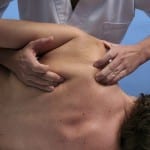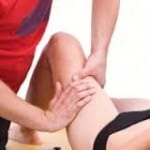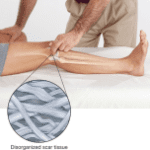re·me·di·al, adj.
(rĭ-mē′dē-əl)
- Supplying a remedy.
- Intended to correct or improve deficient skills in a specific subject: remedial math.
The Latin origin of the word remedial is (probably) the word media, which in Latin means “the middle” or “the balance.”[mfn]Answers.com (n.d). What is the Origin of the word medicine. Answers.com. Retrieved from http://www.answers.com/Q/What_is_the_Origin_of_the_word_medicine[/mfn] In Roman and Ancient Greek traditions medicine was aimed at balancing the systems of the body.
The word “medicine” very likely descends from the same Latin root.
So, the word remedial (re-media) literally means “re-balance.”
Remedial massage aims to rebalance your body and thus to provide a remedy for physical pain, injury or dysfunction. It targets mainly your muscles – though ligaments, tendons, and joints are also on the menu. It affects the positions of your bones, and thus your posture, as an effect – after all, what moves your bones…? Your muscles!
My particular style of remedial massage is based primarily on two major techniques: myofascial release, and neuromuscular therapy.
It is also underpinned by the Swedish remedial style, and I use a number of Muscle Energy Techniques (MET).
Swedish Remedial Massage
Popularised by Per Henrik Ling, a Swedish teacher of physical education, this style is what is classically known as massage: kneading, rubbing, and rhythmically pummelling on the skin to relax the muscles.
In between all of my technical methods I use a healthy dose of Swedish massage to even out your treatments, helping you to relax and make it more likely that your body will respond positively to everything else.

Muscle Energy Technique (MET)
Pioneered by leading osteopathic doctors in the early 1900s,[mfn]Spinaris T, DiGiovanna EL (2005). Chapter 14: Muscle energy technique. An Osteopathic Approach to Diagnosis and Treatment (3rd ed.). Lippincott Williams & Wilkins. pp. 80–82. ISBN 978-0-7817-4293-1[/mfn] MET calls on your active involvement by having you activate your muscles in directed ways, with varying levels of resistance, to stimulate specific reflexes aimed at changing the way your muscles work.
In some cases we may need to activate, not relax, your muscles in order to balance out your posture and function. This is often the case with, for example, weak gluteus maximus or rhomboid muscles.
In the case of over-active muscles was can call on this ‘neuromuscular judo’ to use the muscles to relax themselves.
MET can often be used to actively re-position many major joints, and put things back where they should be. We would then use other massage methods to help the muscles to relax into their new, re-balanced positions.

Myofascial Release
The phrase “myofascial release” was coined in the 1960s by Robert Ward, along with physical therapist John Barnes. He says:
“Myofascial Release involves applying gentle sustained pressure into myofascial [muscular] connective tissue restrictions to eliminate pain and restore motion.”[mfn]John F. Barnes, PT (2015). What is Myofascial Release? Myofascialrelease.com. Retrieved from https://myofascialrelease.com/about/definition.aspx on 01 Nov 2016.[/mfn]
It targets the thin, strong, film-like tissue that wraps around and through your muscles – the fascia[mfn]Further reading: Paoletti, Serge (2006). The Fasciae: Anatomy, Dysfunction & Treatment. Seattle, WA: Eastland Press. pp. 23–24. ISBN 0-939616-53-X[/mfn] – to create space for the muscle fibres to relax and reset. You know that silvery, skin-looking stuff you see on a fresh steak? That’s fascia.
You can imagine it a bit like the skin of a sausage. If you stretch out the skin, the meat has more room to move.
Here at Massage Dot Melbourne we also use myofascial cupping to loosen and free up your fascia.

Neuromuscular Therapy
Also called Trigger Point Therapy, the aim here is to find the tight bands of tissue within muscles and zero-in on the tender points within them. These tender nodules can refer pain to other parts of your body and, when released, can alleviate a lot of recurring, nagging pain.
Neuromuscular therapy works more on the nervous system than the muscles themselves. After all, what tells the muscles what to do…? Your nerves! So if we can calm down your nervous system, we can calm down your muscles.
We stimulate specific nerve endings, pathways, and reflexes to reduce spasm and alleviate pain. The treatments can be a bit intense, but I do everything I can to keep discomfort to an absolute minimum. More often than not, any soreness you feel during treatment will be that “good pain” kind of feeling.

Conditions that remedial massage can help
Besides just feeling awesome, remedial massage is useful for alleviating or eliminating any of the following conditions:
- General muscle and joint stiffness and soreness
- Stress, burnout, anxiety and depression
- Poor sleep patterns, fatigue or tiredness
- Poor posture
- Nerve compression syndromes such as carpal tunnel or sciatica
- Sprains and strains
- Poor athletic or sports performance
- Neck and back pain
- Headaches and migraines
- Poor movement dynamics
Give us a call or email to find out how we can help you, specifically.
